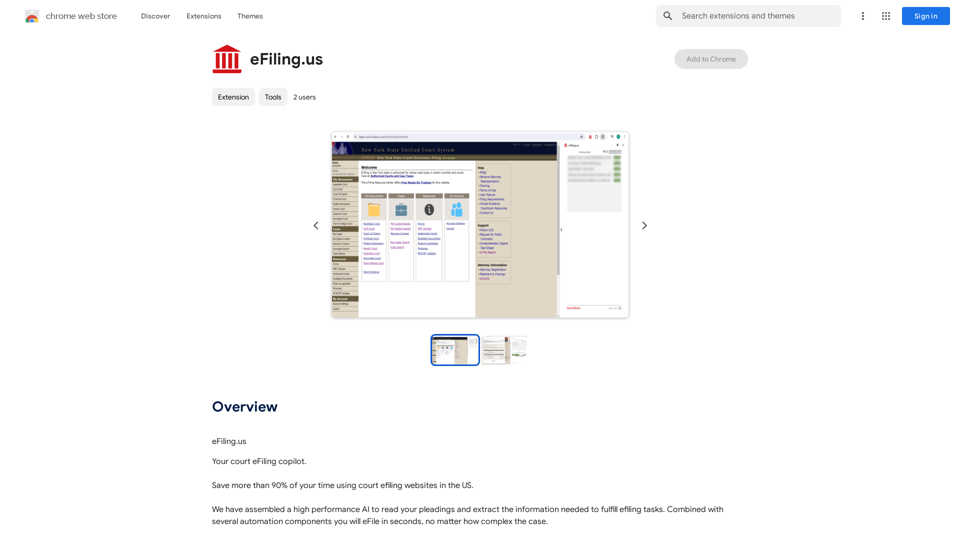TensorScan AI is a browser extension that provides real-time analysis and categorization of Ethereum wallet transactions. It integrates seamlessly with Etherscan.io, offering users valuable insights into wallet behaviors, investment strategies, and token holder profiles. This powerful tool enables users to explore the Ethereum blockchain more effectively, leveraging AI-driven intelligence for informed decision-making.
TensorScan AI
Analyze Ethereum wallets easily with the TensorScan AI extension.
It works perfectly with Etherscan.io. Download it now!
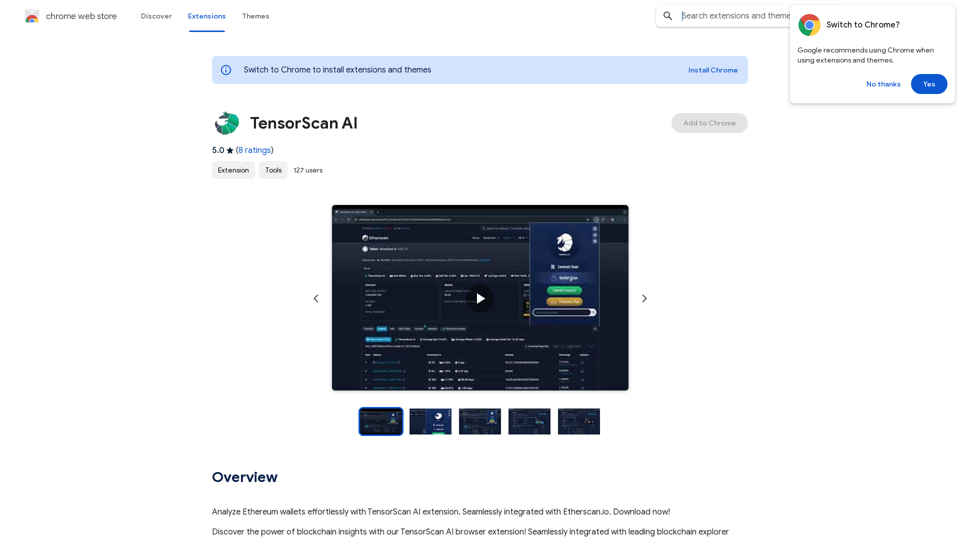
Introduction
Feature
Real-time Analysis
TensorScan AI offers instant insights into Ethereum wallet transactions, including:
- Wallet behaviors
- Investment strategies
- Token holder profiles
Seamless Integration
- Fully integrated with Etherscan.io
- Provides a comprehensive view of the Ethereum blockchain
AI-driven Intelligence
- Leverages artificial intelligence for valuable insights
- Helps users make informed decisions
Easy Installation and Setup
- Download and install from Chrome Web Store
- Configure settings to suit individual needs
- Start analyzing Ethereum wallet transactions
Flexible Pricing Options
- Free version with limited features
- Paid subscription with additional benefits and extended access
Customizable Settings
- Tailor the extension to specific needs and preferences
- Optimize the user experience
FAQ
What is the purpose of TensorScan AI?
TensorScan AI is designed to provide real-time analysis and categorization of Ethereum wallet transactions, empowering users to gain valuable insights into wallet behaviors, investment strategies, and token holder profiles.
How does TensorScan AI work?
TensorScan AI uses artificial intelligence to analyze Ethereum wallet transactions, providing users with instant insights and valuable information about the Ethereum blockchain.
Is TensorScan AI free?
TensorScan AI offers a free version with limited features, as well as a paid subscription with additional benefits and extended access. Users can start with a free trial to explore the features before deciding on a subscription.
Latest Traffic Insights
Monthly Visits
193.90 M
Bounce Rate
56.27%
Pages Per Visit
2.71
Time on Site(s)
115.91
Global Rank
-
Country Rank
-
Recent Visits
Traffic Sources
- Social Media:0.48%
- Paid Referrals:0.55%
- Email:0.15%
- Referrals:12.81%
- Search Engines:16.21%
- Direct:69.81%
Related Websites
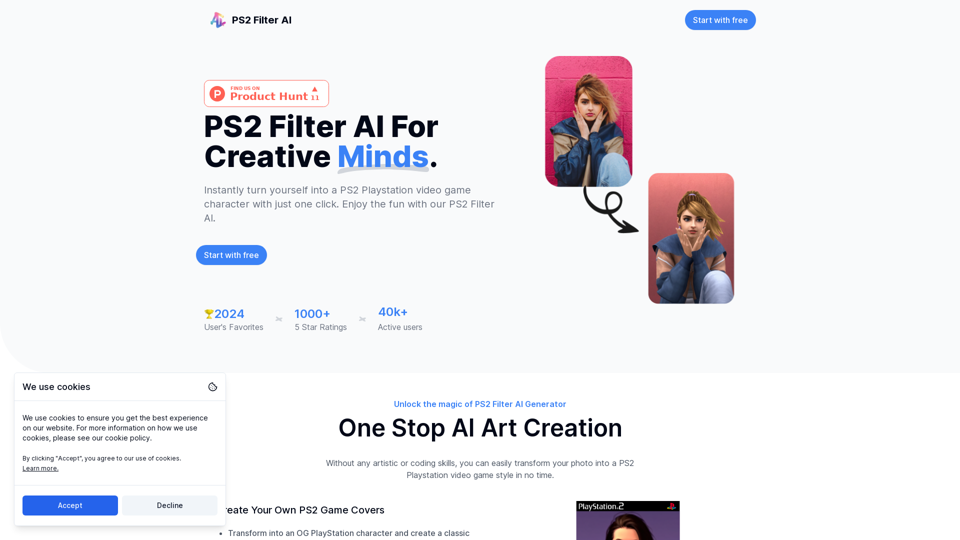
Discover the magic of AI with our PS2 filter and instantly transform your photos into classic PS2 video game characters. Experience this retro style with a modern twist—just upload your photo and see the transformation in one click! Try it for free at ps2filterai.net.
0
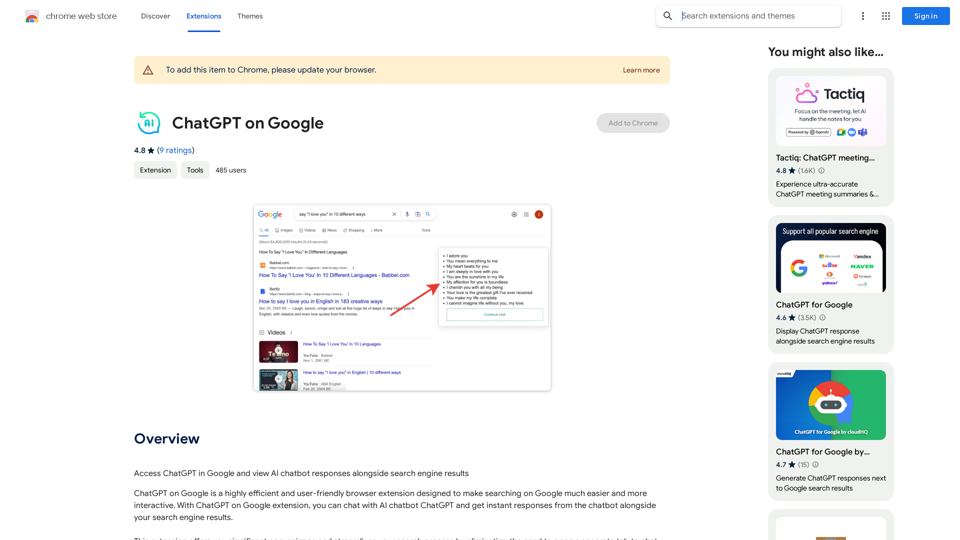
Use Google to access ChatGPT and see the AI chatbot's answers next to regular search results.
193.90 M
-akpofpnbjlhfdmcmnolgbpagpdkfkbef-thumbnail-1720093897.png)
This is a Chrome extension that analyzes images you want to post to X (formerly Twitter) and automatically generates alternative text for them.
193.90 M

ICLight Studio - Free and Easy AI Photo Relighting
ICLight Studio - Free and Easy AI Photo RelightingTransform your photos with ICLight's free AI-powered relighting technology. Create professional studio lighting effects with simple text prompts.
0
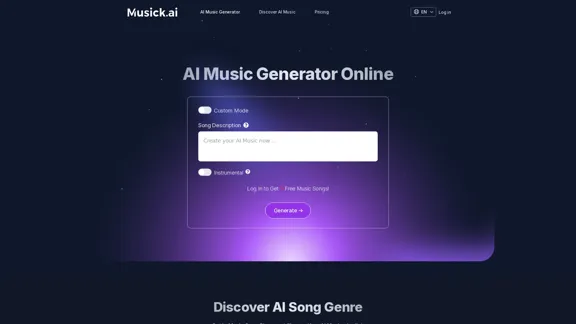
Musick.ai: Free AI Music Generator & AI Song Maker Online
Musick.ai: Free AI Music Generator & AI Song Maker OnlineExplore Musick.ai as an innovative AI Music Generator, including music theory and music plaza. Create songs with AI and make AI music now!
57.04 K


